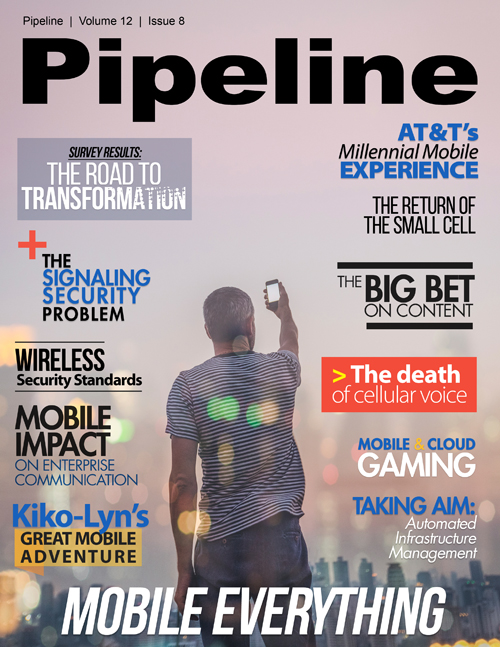The Road to Transformation

If you think about it, service providers should be transformation experts by now. Remember, we’re talking about an industry today that was, just 20 years ago, a monopolistic, government-controlled utility. I can’t think of any other industry that has to contend with as many monumental shifts, with such frequency, that have had such a fundamental impact on their business.
Milestones and Game Changers
In the U.S., the 80’s saw the final break-up of AT&T into 8 separate, but still closely-regulated, entities: the introduction of the first consumer wireless service and the dawn of the commercial Internet. In many ways, this laid the groundwork for the modern telecommunications landscape. The breakup of AT&T lead to new competitive markets, the introduction of wireless services un-tethered voice communications from fixed-line service, and the introduction of the Internet paved the way to mass digital communication and commerce.
The 90’s saw the deregulation of telecom, the introduction of new calling features (e.g. call waiting), the advent of Wi-Fi, Voice-over-IP (VoIP), Internet Protocol Television (IPTV), the launch of the Iridium satellite network, and the adoption of commercial and consumer broadband. These were the catalysts for innovation, enabling new competition across traditional boundaries. The Internet had now entered the homes (e.g. DSL and Cable) and businesses (e.g. ISDN and T1) of mainstream consumers ushering in an era of competition and consumer demand that created an environment so fierce, many service providers struggled just to keep up.
This era of IP transformation changed the game, entirely. Cable companies were now offering telephone service (VoIP). Telephone companies were now offering video service (IPTV). Both were offering broadband Internet to residential and business customers. New competitors began to emerge, offering PC-to-PC and PC-to-Phone telephone services using the Internet as the backbone (VoIP).
We also saw the launch of cloud sites and applications during this time such as Ebay (1994), Napster (1999), and Saleforce.com (1999). And quietly, wireless services began to take root, dropping in price and increasing in popularity – including the birth of a cult-like Blackberry community. Wireless subscribers would grow from 5 million in 1990 to 100 million by the year 2000; and virtually every public place was becoming speckled with mobile users more entrenched in their device than their local surroundings.
In the years that followed, we watched the proliferation of mobile computing and the launch of social networking, communication, and sharing sites and software such as Vonage (2001), Skype (2003), LinkedIn (2003), Facebook (2003), YouTube (2005), Twitter (2006), Netflix (2007, streaming service) and Dropbox (2008) – culminating with the launch of the iPhone in 2007 and followed by the iPad in 2010. We witness the mobile boom, the phenomena of “cord cutting,” and the erosion of the traditional communication revenue streams. The demand for data was insatiable; the need for ubiquitous connectivity became an absolute necessity.
To keep up, service providers deployed a smattering of fixed and wireless operational infrastructures. DSL gave way to Fiber. 2G evolved to 3G. An IP Multimedia Subsystem (IMS) was introduced as an evolutionary path to all IP-based wireless network architecture. 4G was introduced to meet customers growing need for speed, proselytizing the hopes of 1 gigabit per second peak rates of data transfer for mobile consumers. Speed became a competitive differentiator and the 4G brand war ensued. LTE began to appear as a “better than 3G but not quite 4G” caveat to overzealous marketing claims. Soon, the rafters of factories, office buildings, coffee shops, and arenas became littered with wireless routers and small cells. The skyline obscured with cell towers.
By the end of this year, 6.4 billion connected devices are predicted to be in use and mobile payments are expected to reach 617 billion dollars worldwide, according to analyst firm Gartner. Not too shabby for what started out as a stodgy old utility.
Hallmarks of Transformation:
Opportunity, Disruption, Innovation, and Fuel
Regardless of where you are in the world, this transformation is continuing to occur. The Digital Age now spans virtually every corner of the globe and, arguably, the only thing that differs is where you are in the transition. But if we look at the transformative journey itself, there is a certain commonality that can be derived and applied to almost every scenario. If you are just beginning or restarting this journey, perhaps these key learnings that can be applied to navigate the pitfalls, overcome the hurdles, and avoid the mistakes of those that have successfully navigated this path.
In the former example, the break of AT&T and subsequent deregulation of the telecommunications market spurred new opportunities. As did the introduction of wireless services and the Internet. These new opportunities were transformative changes that spurred unbridled competition. The discord, collaboration, and transformation that followed lead to the advent of such innovative technologies and applications that it redefined how we communicate as a global society. This transformation continues to be fueled by communication, collaboration, and commerce – things so fundamental that they have been at the root of every human society that has ever been recorded.



















